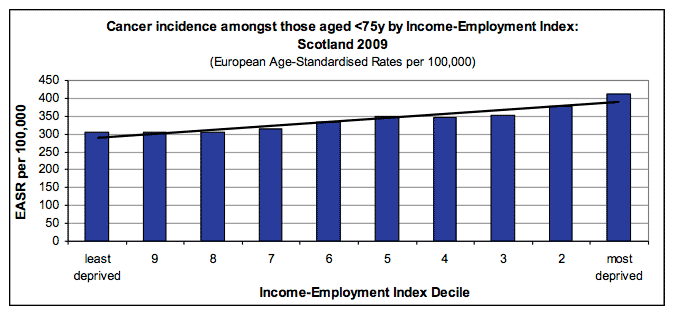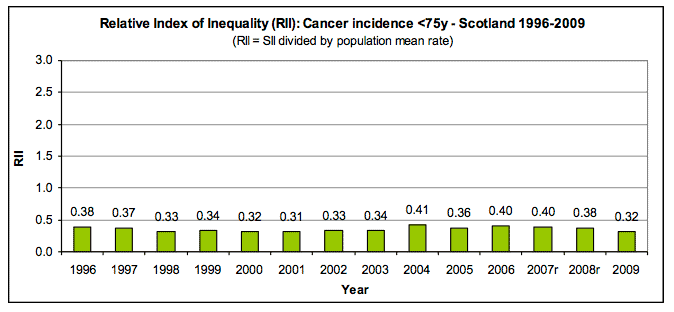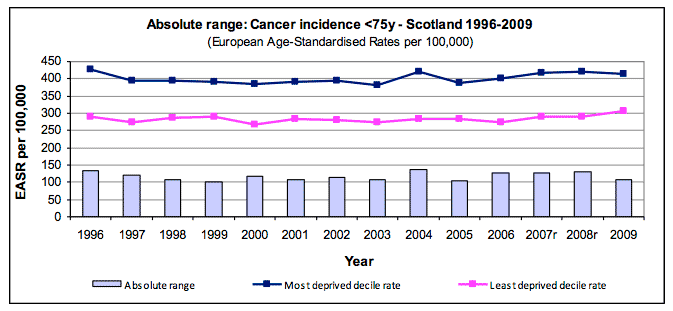Long-Term Monitoring of Health Inequalities
An annual report which summarises the long-term differences in health trends between the least and most deprived areas of Scotland.
This document is part of a collection
Cancer - incidence rate aged under 75 years
Summary
- Inequalities are stable in both absolute and relative terms over the long term with some evidence of a slight decrease in the last few years
There were around 19,700 new cases of cancer diagnosed in 2009. Rates have decreased by 2% since 1996 but fluctuated year on year with no clear trend since 1997. In 2009, the rate in the most deprived decile was 413 per 100,000 population compared to a rate of 305 in the least deprived decile - a difference of 108. Inequality measures (both absolute range and RII) have remained stable since 1996. There has been some decrease in both inequalities measures since 2006, which is a result of a worsening in the least deprived areas, while rates in the most deprived areas have remained steady.
Inequalities gradient in the most recent year available

Relative Index of Inequality ( RII) over time

Absolute range over time

Scale / context
| Number of new cases | Target population size | Rate per 100,000 ( EASR) | |
|---|---|---|---|
| 1996 | 18,136 | 4,754,906 | 345.1 |
| 1997 | 17,160 | 4,740,269 | 326.7 |
| 1998 | 17,144 | 4,729,975 | 323.6 |
| 1999 | 16,915 | 4,721,298 | 318.4 |
| 2000 | 17,122 | 4,708,667 | 321.2 |
| 2001 | 17,097 | 4,703,661 | 318.8 |
| 2002 | 17,465 | 4,690,508 | 323.3 |
| 2003 | 17,453 | 4,690,603 | 319.2 |
| 2004 | 18,002 | 4,706,922 | 326.5 |
| 2005 | 17,800 | 4,718,403 | 319.3 |
| 2006 | 17,873 | 4,734,676 | 318.5 |
| 2007 1 | 18,683 | 4,755,963 | 329.9 |
| 2008 1 | 19,342 | 4,775,321 | 337.1 |
| 2009 | 19,708 | 4,795,479 | 339.2 |
1. The 2007 and 2008 data has been revised since the publication of the October 2010 report.
There is a problem
Thanks for your feedback